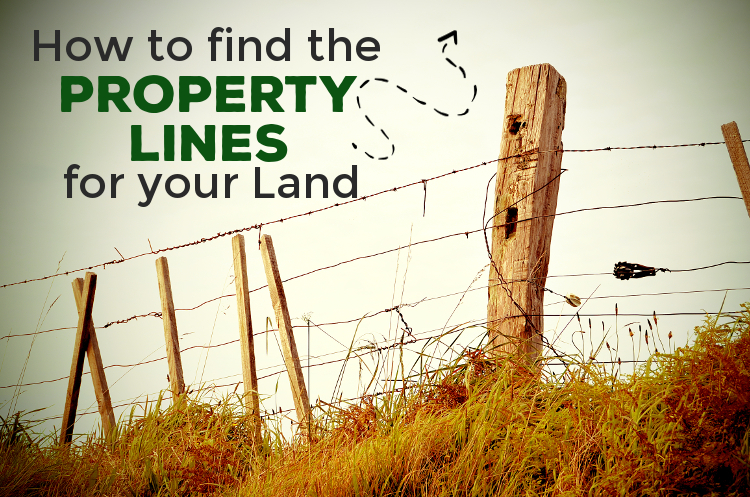How to Find the Property Lines for Your Land

As a land owner, knowing the location of your property lines is one of the best ways to avoid disputes with your neighbors.
Property lines, or boundary lines, are the defined points where one owner’s land ends and the neighboring property begins. A property owner uses boundary lines to determine where they can legally place items such as fences, driveways, outbuildings like pole barns or anything else. Erecting a structure on or partially on another person’s land can lead to lawsuits and unpleasant situations with neighbors.
1. Check your deed. The deed contains the legal description of your property, which is basically the property’s measurements and boundaries in words. For most people, the property description can be difficult to interpret, so you may not find it helpful. However, sometimes, the legal description uses landmarks and measurements that you can interpret. If that’s the case, measure from the landmarks in the description to the property lines. Mark each corner with a stake or other marker. Measure from each stake to the next all the way around your property to ensure the measured lines match the deed. Physically measuring the boundaries will allow you to visually determine where the lines are and avoid encroaching on your neighbor’s land. Just be warned: An old description may rely on the location of a tree that no longer exists or a creek that has gone dry.
2. Check the official website for the assessor’s office in your municipality. Some assessors have mapping tools available online for all of the real estate in the area. You can use the maps to find the boundary lines for your property and to determine where nearby landmarks are located, such as the east line of your street. You can use these landmarks as fixed points to measure from. Using a tape measure or measuring wheel, measure the distance from each of the landmark points to your property line as shown on the maps.
3. If you don’t have a copy, and there’s nothing available online, visit the county recorder’s office or the assessor’s office. When you bought your property, you may have received a plat map, showing property lines and measurements. If it wasn’t included with your paperwork, check with your local clerk’s or surveyor’s office. Ask if there are any maps available for public viewing that include your neighborhood and street. Some of these maps may be available online, while others will be hard copies or microfiche copies. Even maps of neighboring properties can be valuable if they show shared property lines.
4.Last but not least, hire a surveyor. The most surefire way to determine legal property lines is by hiring a professional. The surveyor can measure and map the property and will generally also mark the corners of the property with stakes. It’s always a good recommendation to be present when the surveyor comes to measure your property, so they can review the property lines with you. The cost of a survey will vary depending on your location, lot size, and other variables. The surveyor needs to be licensed with your state and should carry professional liability insurance, which can cover you if the surveyor makes a mistake in the survey.











